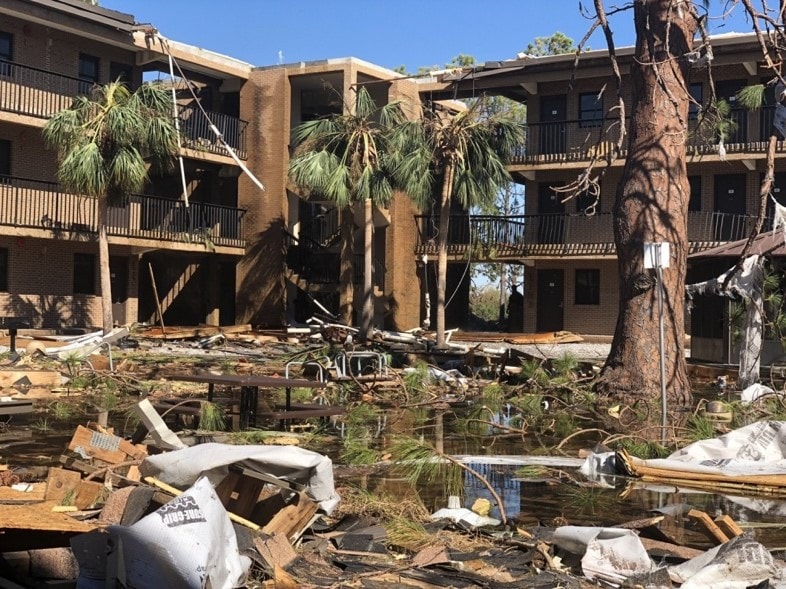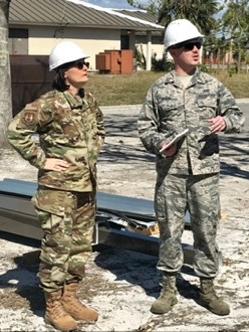In October 2018, Tyndall Air Force Base just east of Panama City, Florida was directly hit by Hurricane Michael, a Category 5 storm. The damage was significant with over half of the buildings on the base destroyed. Brig. Gen. Patrice Melancon was called back to active duty to the Tyndall Program Management Office (PMO) to lead the base’s massive $5 billion rebuild. The PMO team is undertaking groundbreaking work to rebuild the base and incorporate the principles and practices of Engineering With Nature into the Tyndall rebuild and the Air Force’s Installation of the Future initiative. Their intention is to create a resilient and sustainable base that will be a model for the region and potentially all other coastal areas in the US. With practically a ‘clean slate’ available to explore options, Melancon discusses the opportunity to fundamentally rethink what environmental and operational functions are needed for Tyndall, now and in the future.

The courtyard of the student housing complex at Tyndall Air Force Base, Fla., sits flooded with water and debris following Hurricane Michael on October 10, 2018. Hurricane Michael is the third largest hurricane to make landfall in the United States, reaching peak winds of 155 miles per hour. Photo by Staff Sgt. Alexander Henninger
The PMO team is evaluating best available data and information specific to the base and its landscape. They are also considering variables that may have changed since the original buildings were constructed (e.g., flood elevation and expected wind loads). Outputs from this analysis will inform standards needed to design and construct facilities, including the infrastructure needed to accommodate the new F35 aircraft. This new installation must withstand present-day hazards, but it must also be able to accommodate future environmental conditions and associated risks. Concurrently, the team is using this time to evaluate the use of EWN strategies through the construction of nature-based solutions in the form of landscape features like beaches and dunes, oyster reefs, and wetlands that reduce risks of flooding while providing additional habitat for threatened and endangered species as well as social value for Air Force personnel and the surrounding community. As she notes, “it is a re-imagining of the base”.

Photo by Tech. Sgt. Kelly Goonan
In this podcast, Melancon describes four pilot projects underway that incorporate EWN principles. One of those projects includes the beneficial use of sediments to strengthen the existing beach/dune system. The goal is to use nature-based solutions to increase the resilience of the installation and the local community by reducing the risk of damage from storm surge and waves while also creating environmental as well as social benefits supporting recreation and tourism. Melancon believes that collaborating with the community and a wide range of stakeholders is important to the success of this initiative and invites interested listeners to become involved and participate in the stakeholder engagement underway at Tyndall. Listeners can share their ideas at the EWN website (www.engineeringwithnature.org) or the Coastal Resilience at Tyndall Air Force Base website (www.tyndallcoastalresilience.com).







